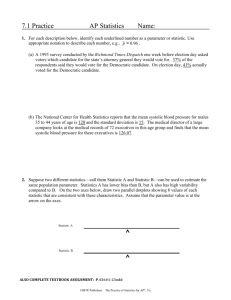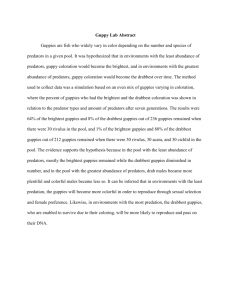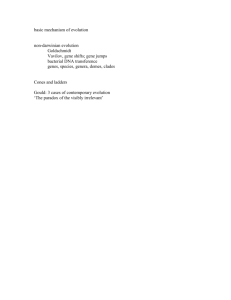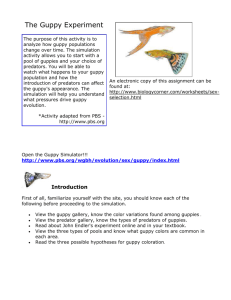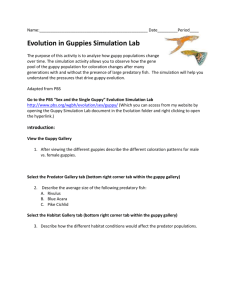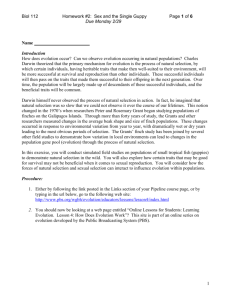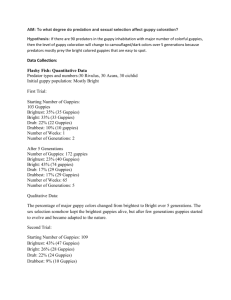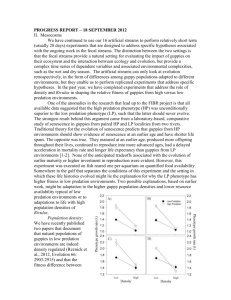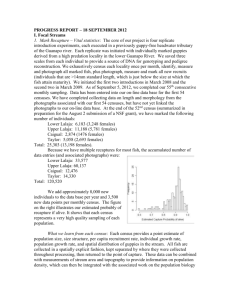Flashy Fish Lab Aim
advertisement
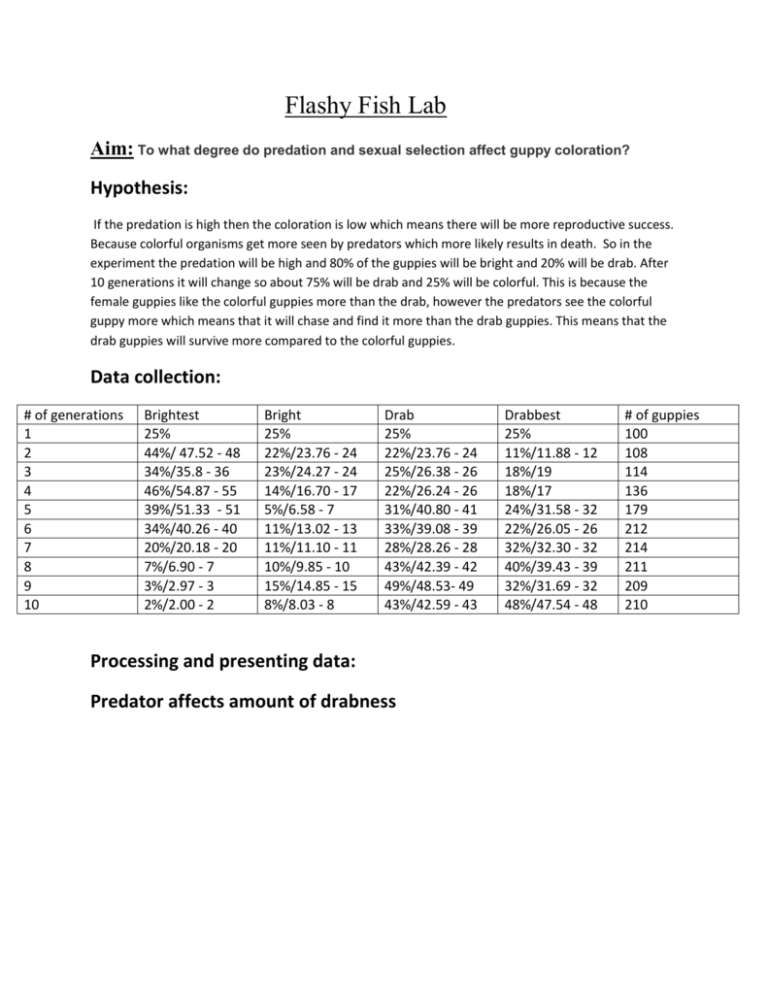
Flashy Fish Lab Aim: To what degree do predation and sexual selection affect guppy coloration? Hypothesis: If the predation is high then the coloration is low which means there will be more reproductive success. Because colorful organisms get more seen by predators which more likely results in death. So in the experiment the predation will be high and 80% of the guppies will be bright and 20% will be drab. After 10 generations it will change so about 75% will be drab and 25% will be colorful. This is because the female guppies like the colorful guppies more than the drab, however the predators see the colorful guppy more which means that it will chase and find it more than the drab guppies. This means that the drab guppies will survive more compared to the colorful guppies. Data collection: # of generations 1 2 3 4 5 6 7 8 9 10 Brightest 25% 44%/ 47.52 - 48 34%/35.8 - 36 46%/54.87 - 55 39%/51.33 - 51 34%/40.26 - 40 20%/20.18 - 20 7%/6.90 - 7 3%/2.97 - 3 2%/2.00 - 2 Bright 25% 22%/23.76 - 24 23%/24.27 - 24 14%/16.70 - 17 5%/6.58 - 7 11%/13.02 - 13 11%/11.10 - 11 10%/9.85 - 10 15%/14.85 - 15 8%/8.03 - 8 Drab 25% 22%/23.76 - 24 25%/26.38 - 26 22%/26.24 - 26 31%/40.80 - 41 33%/39.08 - 39 28%/28.26 - 28 43%/42.39 - 42 49%/48.53- 49 43%/42.59 - 43 Processing and presenting data: Predator affects amount of drabness Drabbest 25% 11%/11.88 - 12 18%/19 18%/17 24%/31.58 - 32 22%/26.05 - 26 32%/32.30 - 32 40%/39.43 - 39 32%/31.69 - 32 48%/47.54 - 48 # of guppies 100 108 114 136 179 212 214 211 209 210 Generation 10 Generation 9 Generation 8 Generation 7 Drabbest Generation 6 Drab Generation 5 Bright Generation 4 Brightest Generation 3 Generation 2 Generation 1 0 10 20 30 40 50 60 Predator affects amount of drabness 60 50 40 30 20 Brightest Bright Drab 10 Drabbest 0 Conclusion The amount of predators affect the amount of colorful guppies. Looking at generation two, the amount of bright guppies where 48% and 12% of the guppies were drab. After 5 or so generations the amount of drab guppies have doubled this is because the guppies are adapting to their environment filled with predators. After 10 generations there are almost no bright guppies left this is because the environment is filled with predators. The results do support the hypothesis because the bright guppies decreased in amount while the drab guppies increased in amount when there where predators in the area. Guppies need to adapt to their environment because they are possibly the lowest on the food chain. They have no way to defend themselves against predators except for their color. And the results from this tests prove that this is so. Even though the females tend to mate more with the bright males, the drab ones survive. Which in the end means that when all of the bright guppies die the females have to mate with the drab guppies. Evaluation The hypothesis was valid because it included the independent and the dependent variable. Also, it had quantitative information which made it possible to measure. Weaknesses Only had one trial The data table wasn’t completely accurate Improvement Write a more detailed conclusion Get a more accurate data table
